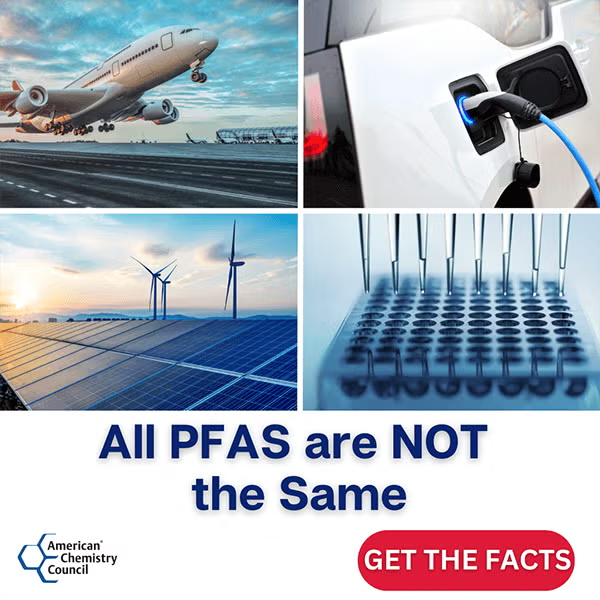The debate and confusion around per- and polyfluoroalkyl substances, often referred to as PFAS or Fluorotechnology, is growing in 2023, as policymakers in some states have begun to consider overly broad, unscientific bans and restrictions on this important family of chemistries.
We see this scenario occurring in Minnesota. New legislation, SF 834/HF 1000, would ban the sale of products containing PFAS in a variety of categories, establish a future regulatory scheme to ban additional product categories containing these chemistries, and impose onerous reporting requirements on manufacturers of all products containing PFAS. Policymakers considering this legislation must not ignore the wide body of science and data around the varying and unique properties that exist among these chemistries.

It is critical to understand that PFAS are a diverse universe of chemistries with different physical, chemical, and toxicological properties that can come in solid, liquid, or gaseous forms. With these vastly different physical properties, it should be easy to see why there is a scientific consensus emerging that A) it’s inaccurate, or even impossible, to group all PFAS together for regulatory purposes, and B) that there are valid approaches for sub-grouping and regulating these different chemistries according to their actual specific properties or potential risk as opposed to a simplistic ‘ban them all’ proposal. If enacted, SF 834/HF 1000 could cost Minnesota countless jobs, harm economic growth in the state, and hamper the ability of businesses and consumers to access products like life-saving medications, rechargeable batteries, catheters and pacemakers, cell phones, automobiles, and many more. It would also contribute to a scenario where U.S. manufacturers face varying restrictions and rules from state to state that could overlap, conflict with each other, or run afoul of federal efforts on PFAS.
In a recently published peer reviewed paper, most members of an international panel of experts agreed that all PFAS should not be grouped together for risk assessment purposes. Most of the experts also agreed that it is inappropriate to assume equal toxicity/potency across the diversity of PFAS chemistries.

The fact is that PFAS are vital to enabling our lives in the 21st century and are absolutely critical to our nation’s economy and supply chain resiliency. Essential U.S. industries such as transportation, healthcare technology, telecommunications, semiconductors, aerospace, construction, renewable energy, and many more rely on PFAS to create, innovate, and lead globally in their respective fields.
Overly broad definitions and regulatory approaches like the one included in SF 834/HF 1000 have the potential to pull in thousands of products and would include many unrelated substances with a history of safe use. For example, because fluoropolymers (which are a family of plastic resins) are based on a carbon/fluorine bond, these substances meet the legislation’s broad definition of PFAS even though they are negligibly soluble in water, nonmobile, nonbioavailable, nonbioaccumulative and non-toxic.
It is critical that policymakers focus first on properly defining the specific subcategories of PFAS that have the greatest potential to cause meaningful risk, based on potential for exposure and toxicity, instead of taking an overly broad approach that could have important unintended consequences.
Such an approach makes sense when you look at how we regulate hydrocarbons, another highly diverse set of chemicals. Both gasoline and a plastic milk jug are hydrocarbons, but we regulate them very differently based on their different health safety profiles and potential impacts on the environment.
Our member companies support smart, science-based regulation of PFAS and have worked extensively with regulators to address concerns. For example, Under the US EPA’s Stewardship Program, several major manufacturers voluntarily committed to cease the manufacture and use of PFOA and related long-chain chemicals. They also agreed that new PFAS chemistries would undergo enhanced regulatory review before being permitted on the market.
The chemical industry is and continues to be committed to the responsible production, use, and management of PFAS chemistries in a manner that protects public health and our environment. We support efforts to appropriately regulate this technology through smarter and more effective public policy, and we will continue to urge decision makers to recognize the many different types of PFAS when considering proposed rules.


